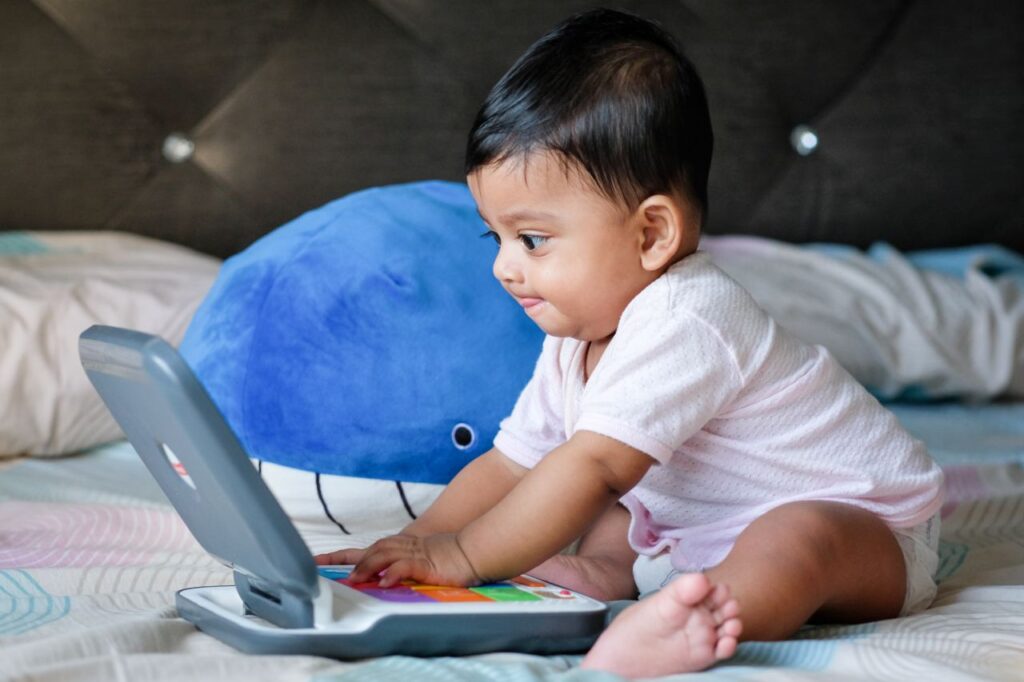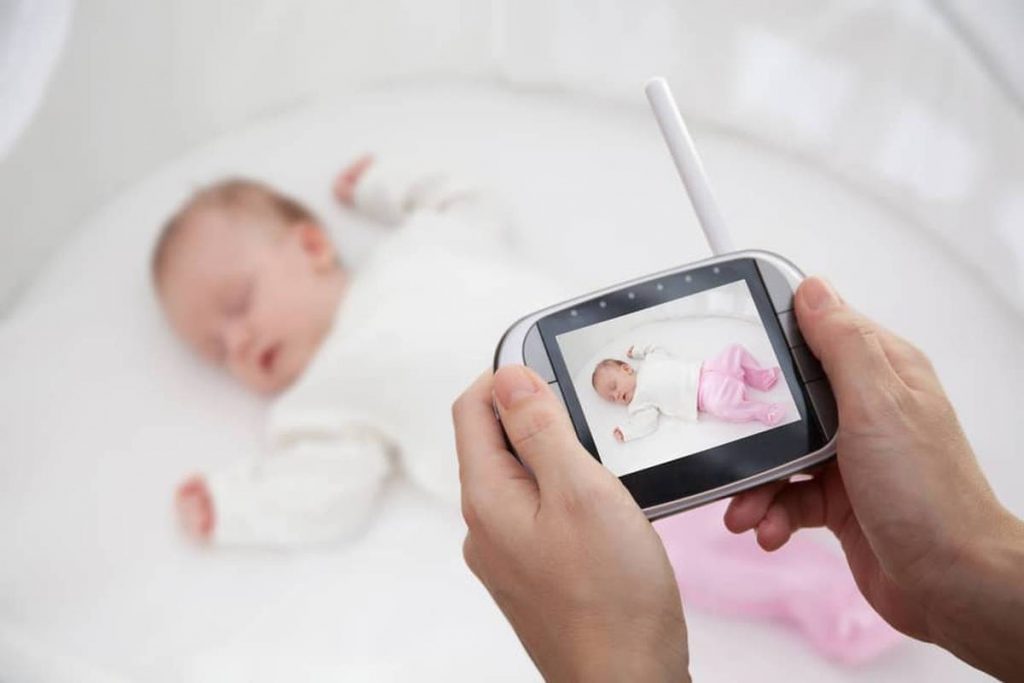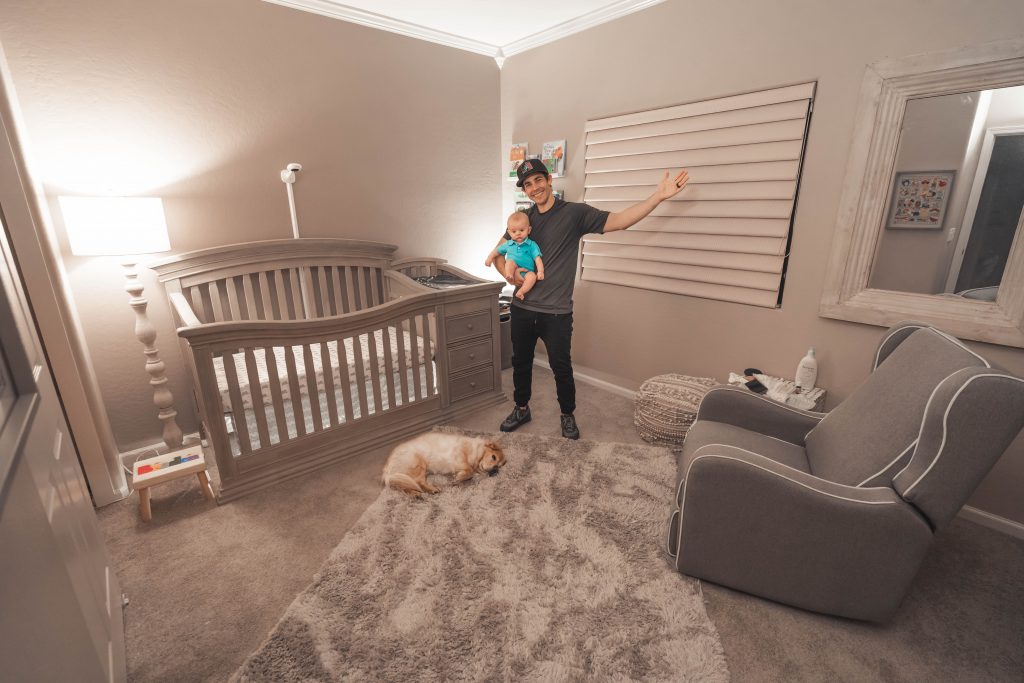My Baby Nursery is committed to researching the top products for you to buy. Some external links are affiliate links, and we may earn a commission on items you buy (at no extra cost to you).
The baby monitor is now a standard item that all parents should have. Among the essential items for a new family is a baby monitor.
There's good reason for all this vigilance; keeping tabs on your child's after-school activities can help you avoid disasters and ensure you never miss out on precious, intimate moments you'll want to remember forever.
And yet, things weren't always like this. Even fifty years ago, the idea of a baby monitor was unheard of. What transpired, then? We can gain a sense of the evolution of the baby monitor by looking back at its brief history.
Wondered where the idea for the baby monitor came from? Who conceived of this incredible life-saving technology that could double as a robotic babysitter? Given the hectic lifestyles of today's parents, it would be impossible to keep a constant watch on their children any other way.
There is no point in making assumptions. You've found the ideal spot if you're curious about the fascinating development of baby monitors and their potential impact on the future of technology.
Who, what, where, and why did the first baby monitor get created?
There's little doubt about it: a century ago, there were no baby monitors. Our grandmothers can attest to this and remind us with pride of the ways in which we were raised in the good old days (without the help of technology or robotics). And what, exactly, was the shift? The origins of the baby monitor and their rationale for creation are a mystery. Did some worried parent get tired of checking on their baby every five minutes and come up with the idea? We can tell you now that it was only in the worst of circumstances that the idea for this unit was conceived.
Check out My Baby Nursery for all your baby product needs.
When Were Baby Monitors Invented?
In 1937, the first baby monitors appeared on store shelves. It was a game-changer that reduced stress levels among parents, at least those with sufficient financial means to purchase it. Unfortunately, the circumstances that necessitated the development of the first baby monitor were tragic.
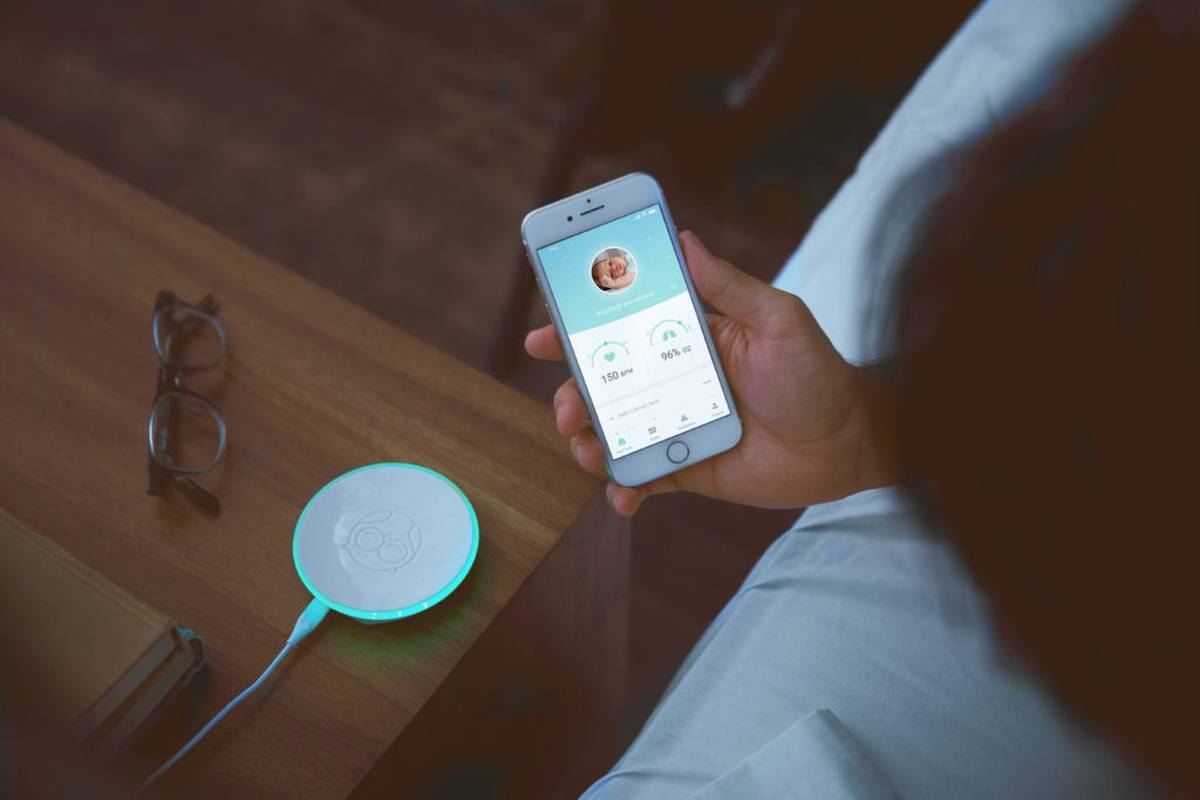
Reasons For Inventing The First Baby Monitor
Kidnapping a baby in 1932 inspired the development of the first baby monitor. Charles Lindbergh's kid was taken from their house and murdered on this sad Tuesday night when he was just 20 months old. His room was searched, and a ransom letter was discovered, corroborating his fears. Among American pilots, Charles was a household name. Both the mother and the nanny were at home on that day, so it's puzzling how this could have happened. Could this have been prevented if there had been a baby monitor in the home? Although we could be wrong, we doubt it. Terribly, a month later, Charles Jr.'s remains were discovered within a few kilometres from the Lindbergh home. This being a high-profile case, it was covered extensively in the media and was the topic of many conversations. Eugene McDonald, president of a company then known as Zenith, was moved by the narrative to create the first baby monitor. The idea behind this baby monitor was straightforward: to protect his child from a similar fate. Mr. McDonald attempted to listen in on his daughter's bedroom by placing the device there. After being convinced of the effectiveness of the unit, he finally gave his firm permission to market it.
In 1937, Zenith Radio Nurse Invented The First Baby Monitor.
While working for Zenith Radio Corporation in 1937, Isamu Noguchi created the first baby monitor. In 1938, Zenith finished manufacturing and releasing their audio baby monitor to the public under the brand name Zenith Radio Nurse. A radio receiver and the Guardian Ear worked together to magnify sound. The analogue intercom system used by the Guardian Ear broadcast over the power line at 300 kHz. There was only one way of communicating.
In 1938, when the Zenith radio nurse first went on sale, it cost $29.95, which is comparable to around $523 now. In addition to the high price tag, there were technical issues with the electrical transmission, primarily distortions and RF interference. In particular, it used the same radio frequency as automobile stereos and garage door openers. Details of the Zenith radio nurse's operation are provided below.
- The Guardian Ear was in charge of an amplification and oscillator circuit, as well as a microphone (modulator ).
- The radio nurse was able to pick up the induced circuit as it travelled through the lighting circuit.
- Zenith Radio's receiver device featured a microphone, amplifier, and speaker. From mic to speaker, the signal was amplified by a factor of around 500 thousand. A receiver may pick up even the faintest of sounds using this.
The Zenith monitor has issues with distortion and speaker shaking at high volumes.
The widespread anti-Japanese feeling that followed Japan's Pearl Harbor attack led to the destruction of numerous radio receivers, making them extremely hard to come across. Nowadays, you may find it in a few different museums or buy it at an antiques store. If you are curious about the Zenith Radio Nurse and would want additional information, the original Zenith Radio Manual is available for your perusal.
Check out our range of safety baby monitors here.
Changes In Baby Monitors From 1937 To 1970
Zenith Radio, the original baby monitor, used an electrical circuit to transmit analogue audio signals and had a one-way intercom.
Analog-Signal-Of-Baby-Monitor
Due to the difficulties mentioned above, production of the Zenith Radio Nurse model ceased in 1938, and the remaining handful were purchased by museums for their "industrial design."
Baby monitors using the now-expired Zenith patent and analogue signals to transmit audio were primarily produced and sold by a small number of companies between 1937 and the 1960s. One major drawback of the hand-held analogue radios used by soldiers during World War II was that only one conversation could be going on at a time, on each channel. In this case, we have what is known as the simplex mode.
Since they were operating on lower frequency bands (27 MHz or 49 MHz), the troops had to tune their receivers and frequencies to various frequencies in order to overcome this challenge. They were hampered by the scarcity of usable frequencies. The video below provides an overview of 49 MHz band analogue baby monitors.
There was a time when analogue radios were the favoured method of communication since they could still send and receive information even when the received signal was weak or loud.
The Frequency Hopping Spread Spectrum's Invention (1941)
Frequency Hopping Spread Spectrum, a safe form of communication that has played a significant role in the development of baby monitors, was developed in the 1990s (FHSS). Hedy Lamarr and George Antheil, two Americans, came up with the idea for the protocol in 1941 and went on to patent it. It allowed the Allies to communicate and steer torpedoes without being detected or intercepted.
During transmission, signals were able to "hop" from one sub-frequency to another thanks to the technology's use of a spread spectrum sequence. Frequency Hopping Spread Spectrum is the name of the corresponding spread spectrum technology (FHSS).
Some of the greatest baby monitors, like the Infant Optics, Hellobaby, Babysense video baby monitor, and Eufy Spaceview, now employ the FHSS because of its assurance of complete secrecy for all communications. You can find a list of the best FHSS-based baby monitors that are hack-proof in a different post on our site.
Notably, whereas FHSS technology was discovered in the 1940s, when the baby monitor industry was in its infancy, it wasn't deployed in baby monitors until the 1990s. They had to find digital signals to replace analogue ones and enable encryption before they could use those for secure communication.
Check out our post on What are the different types of baby monitors?
Baby Monitors' Evolution: The 1970s, 1980s, And 1990s
Baby Monitors In 1970s
Inventor Rafael Fernandez Aguado of Spain submitted a patent application in 1974. A piece of equipment to keep an eye on the intercom was patented. There was talk of it being a gadget for patient and child monitoring. The baby monitor would serve a dual purpose of listening in and talking back to parents. In contrast to the Zenith Radio Nurse, this baby monitor would let the caregiver or parent to speak to the infant. However, it resembled a telephone in form and function, and some would argue that it wasn't really a baby monitor at all.
1979: James K. Frost submitted an Australian and then a US patent application for a breath monitoring device.
The infant's respiration is constantly monitored, and an alarm is triggered if the baby stops breathing. A 'cot,' or infant crib, was outfitted with an electromagnetic transducer that was meant to be crushed with each inhale and exhale.
If breathing is regular, the transducer attached to the microphone will make a steady noise. In the event that respiration suddenly stopped, it did send an alarm.
The Rise Of Video Baby Monitors From The 2000s To The 2015s
The majority of baby monitors did not begin using wifi for signal transmission until the early 2000s. When it came to transmitting audio and video, analogue baby monitors employed an analogue signal while digital baby monitors began using 2.4 GHz Wifi, DECT, or FHSS technologies. Several of the top-rated and best-selling baby monitors are still equipped with FHSS technology, which deserves recognition here. Two of the safest baby monitors available today are the Infant Optics DXR 8 and the Eufy Spaceview, both of which employ the tried-and-true FHSS data transmission method.
The Development Of Video Baby Monitors – When Baby Monitors Become Popular
Baby monitors that included a camera became popular in the 1990s before the turn of the millennium. News outlets, including television, have aired multiple reports about nannies abusing children while their parents were out of town, as was detailed above in this article. Nannycams, which filmed the infant while the parents were out, made it possible to tell these tales. Baby monitors became a necessity that parents could no longer ignore. There was a huge surge in baby monitor sales in the 2010s, thanks in large part to the widespread availability of wifi models at ever-lower rates.
Many worried parents acquired nanny cams after hearing these stories, and by the end of 1999, most Americans had at least heard of video baby monitors. In addition, wifi signal transmission became a major advancement in the 2000s. The expansion of baby monitors is mostly due to the prevalence of the internet. There are already around 30 patents for video baby monitors, the most majority of which aim to operate on the 2.4 GHz frequency used by wifi.
Several more patents for video baby monitors have also been submitted in the past two decades. There are certain baby monitors that have achieved phenomenal success on the market. Due in large part to its high-quality video and audio, Arlo Baby became one of the most popular wifi baby monitors in 2018. In recent years, video baby monitors have become increasingly compatible with other smart home devices like the Apple Homekit, Amazon Alexa, and the Google Home Hub. Some baby monitors, like Arlo and Nest, are on Google's approved list of cameras for use with the Google Home Hub.
Below is a selection of some of our favourite baby monitors:
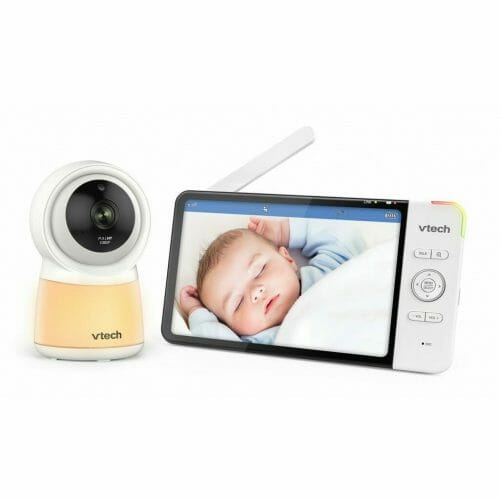
Vtech
RM7754HD Smart Wi-Fi 1080p HD Video Monitor with Remote Access
The Vtech RM7754HD Video Monitor includes a 7” Colour Parent Unit with a HD video baby camera. Watch your child in real time on the parent unit, or on the MyVTech Baby app either way you can be rest assured that your babies sleep can be monitored from anywhere!
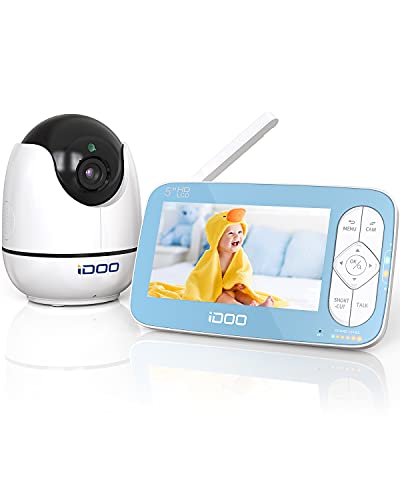
iDOO
Baby Monitor with Camera and Audio
Clear real-time view and large display: Large 5-inch 720p video baby monitor display (for parent) provides a detailed view of your newborn in 10x sharper clarity. It also supports remote camera panning (355°), tilting (90°) and zooming (2x magnification) to ensure that you can remotely keep track of baby’s every move.
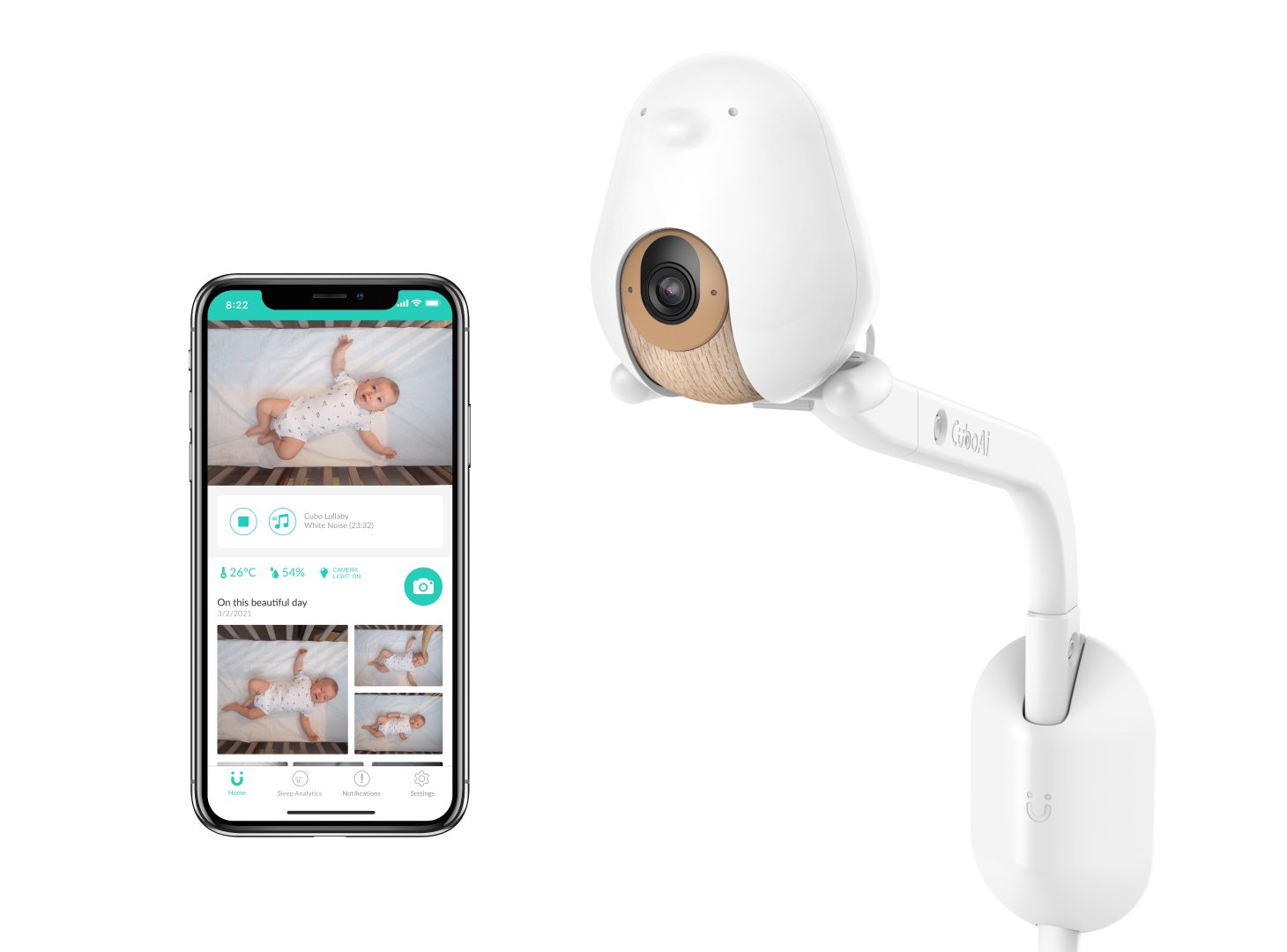
Cubo
Cubo Ai Plus Smart Baby Monitor
The best AI baby monitor to safeguard your baby’s safety from 0-5 years+. AI detection for covered face, danger zone, cry detection, auto photo capture and lots more.
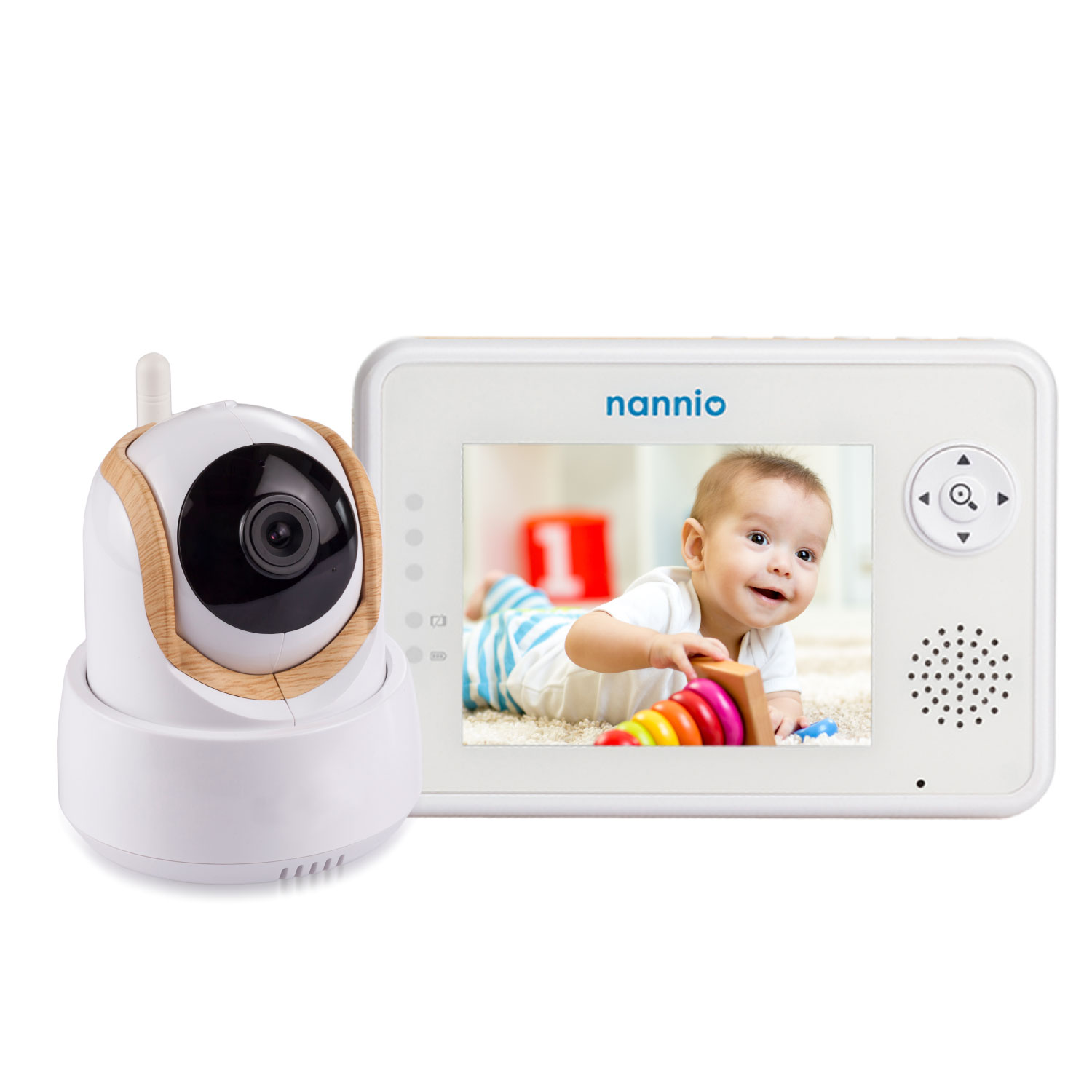
Nannio
Comfy Video Baby Monitor with Camera and Audio
Say goodbye to sleeping in separate bedrooms when you have the Nannio Comfy Video Baby Monitor. This monitor lets you see your baby's room from up to 1,000 feet away with it's long range Wi-Fi signal giving you peace of mind that they are safe and sound. With a 3.5" LCD screen, parents can watch their little one anytime they want in vivid detail- day or night!
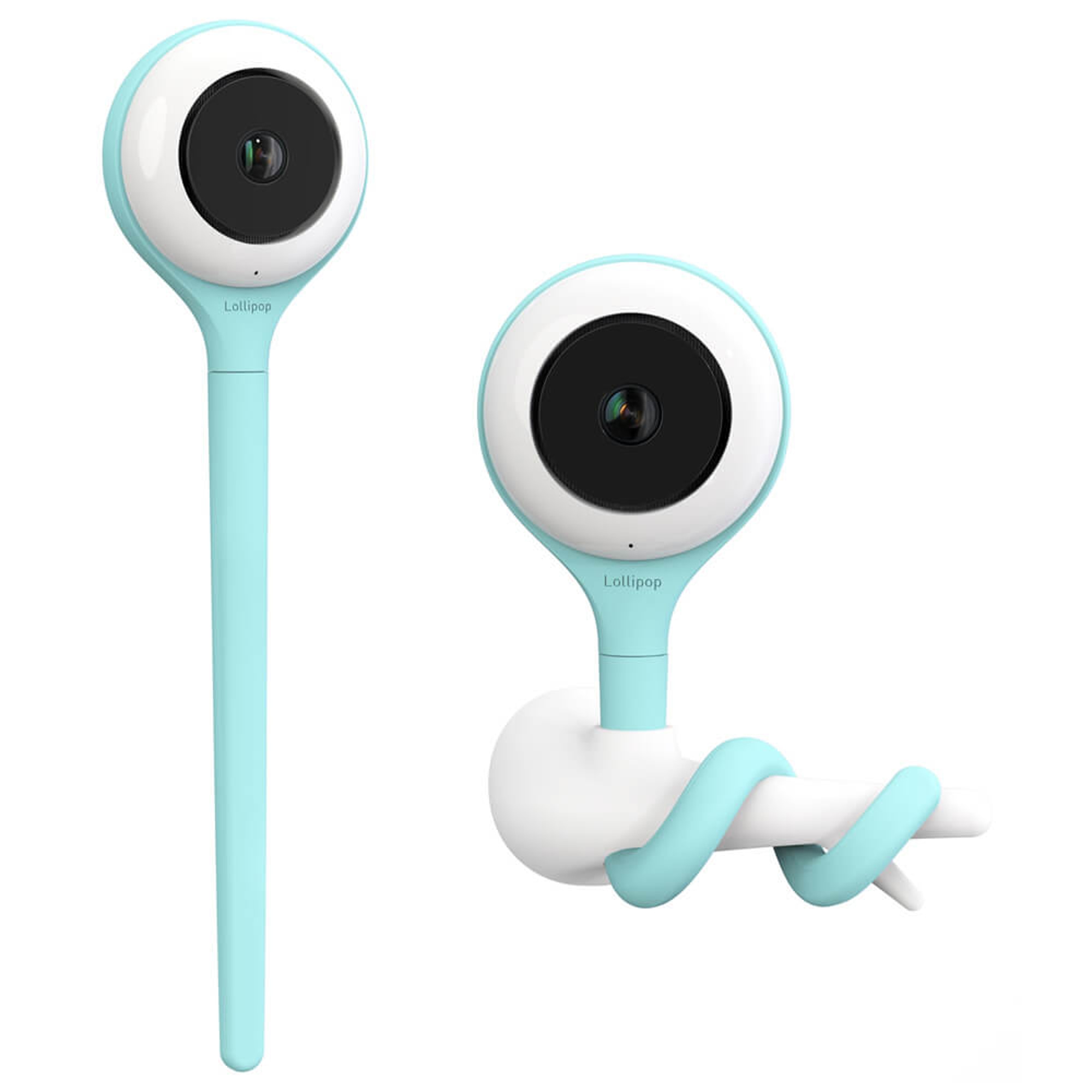
Lollipop
Smart Baby Monitor with True Crying Detection
You and your baby will love the Lollipop smart camera. With a non-invasive and gently contoured set of devices, you can both watch and be aware of all in your baby’s room wherever you might be. The system is smart, easy to set up and use, and gives you a window to look in on baby whenever you may need. Setting up the Lollipop is a breeze. Secure it to weefiee's crib, attach it to the wall or stand it up on a flat surface.
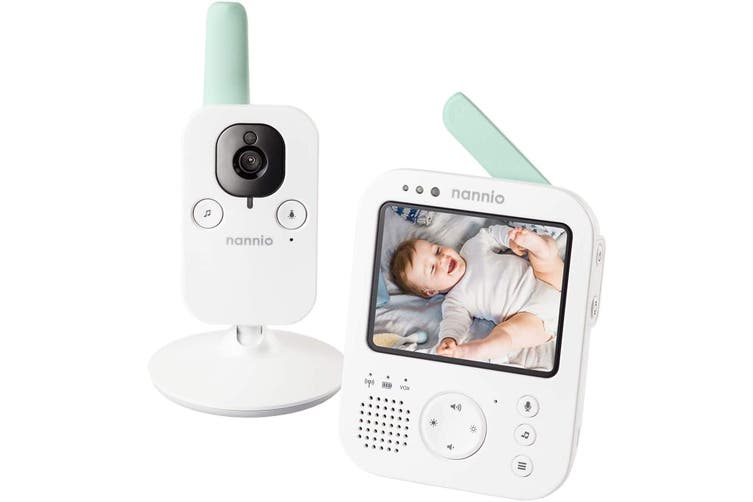
Nannio
Hero3 Video Baby Monitor with Night Light
The NANNIO Hero3 Video Baby Monitor is the smartest, most reliable way to monitor your baby in their room or maybe even outside when they are in the backyard. The video camera connects wirelessly up to 900ft away wit crisp and clear images for crystal clear clarity. With two-way talk you can hear everything that happens in another room which includes 5 lullabies with 3 volume levels for any kind of sound preference.
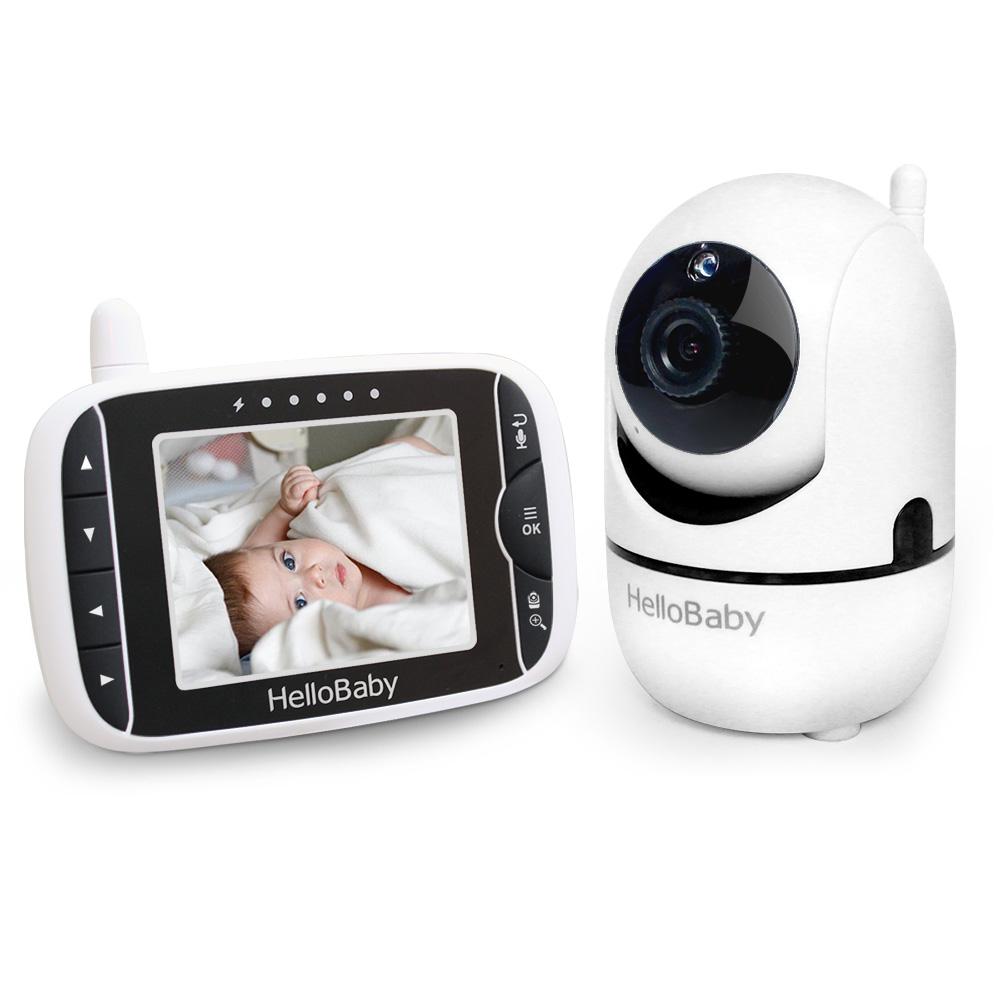
HelloBaby
Baby Monitor,Hello Baby Monitor with Camera and Audio
Home care for the most precious. Our range of baby monitors bring you over 270 degree pan-tilt and zoom camera, two-way talk to provide crystal clear audio, all without breaking a piece out of your budget! The user-friendly controls make it easy for you to navigate through the features like night vision and nursery temperature monitoring.
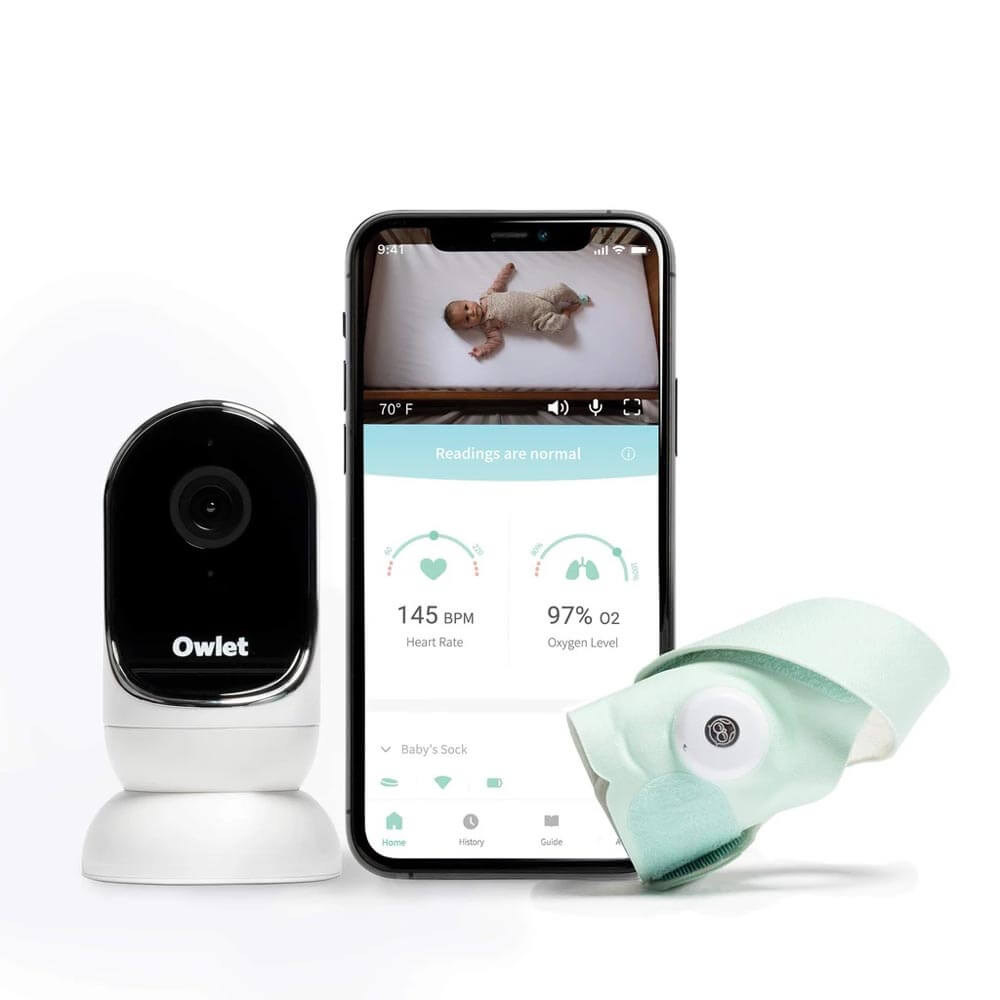
Owlet
Baby Monitor Duo + New Smart Sock 3
The Owlet Monitor Duo combines the award-winning Smart Sock with the Cam for the most complete picture of your baby's well-being. Track your child's heart rate, oxygen level, and sleep trends, while streaming live HD video to your phone. View your child's readings in real time, from anywhere, in our free App and receive notifications if readings leave preset zones, and sound and motion notifications to stay informed of your child's needs.
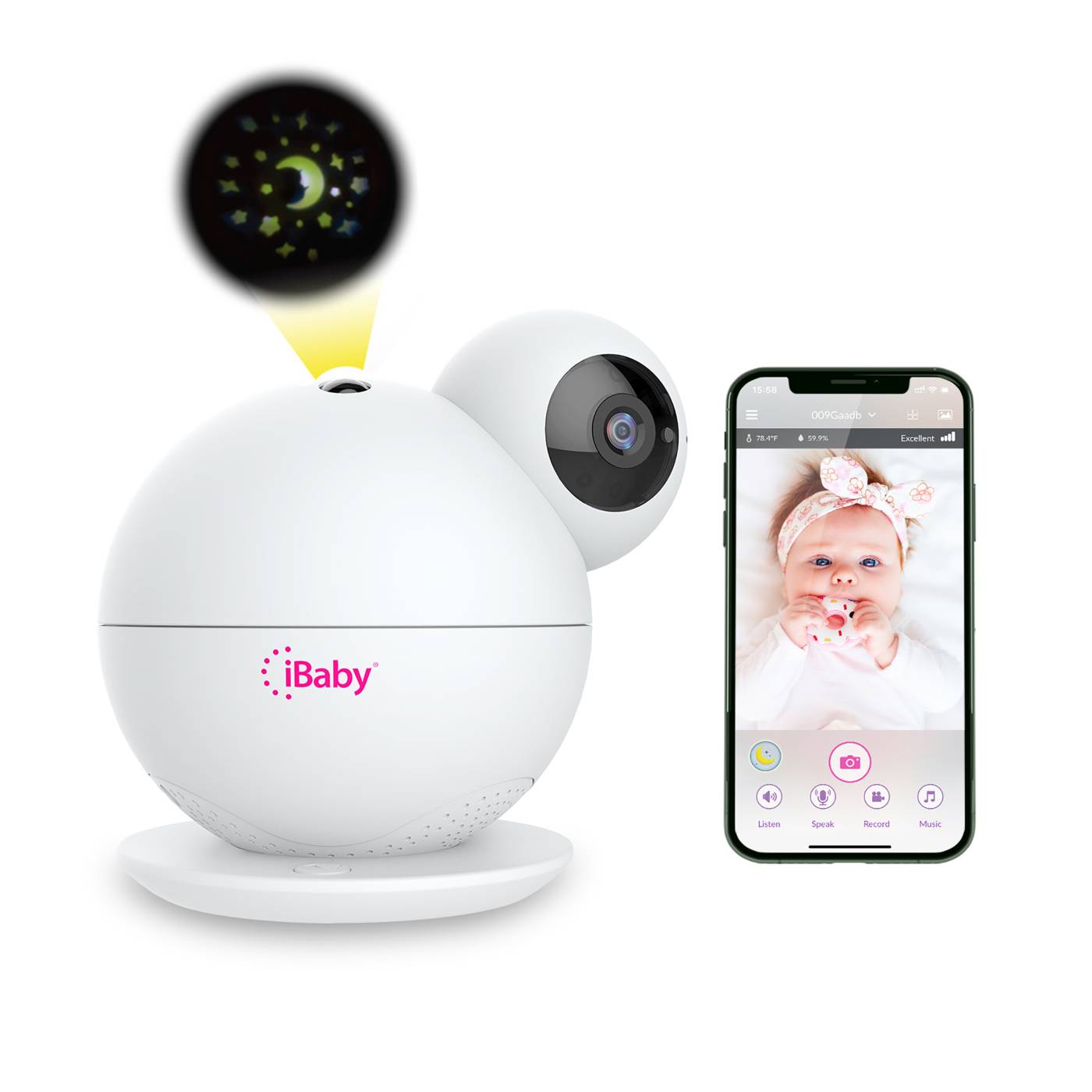
iBaby
Ibaby M8 Baby Monitor
Use iBaby Care M8, our smart baby monitor, using industry-leading baby technology and built-in starry night moon and star projectors to bring your child to sleep. M8 is meticulously built and full of smart functions. It turns into a parenting assistant, allowing you to sit back and relax and help you parenting easily and happily. M8 includes a wall bracket.
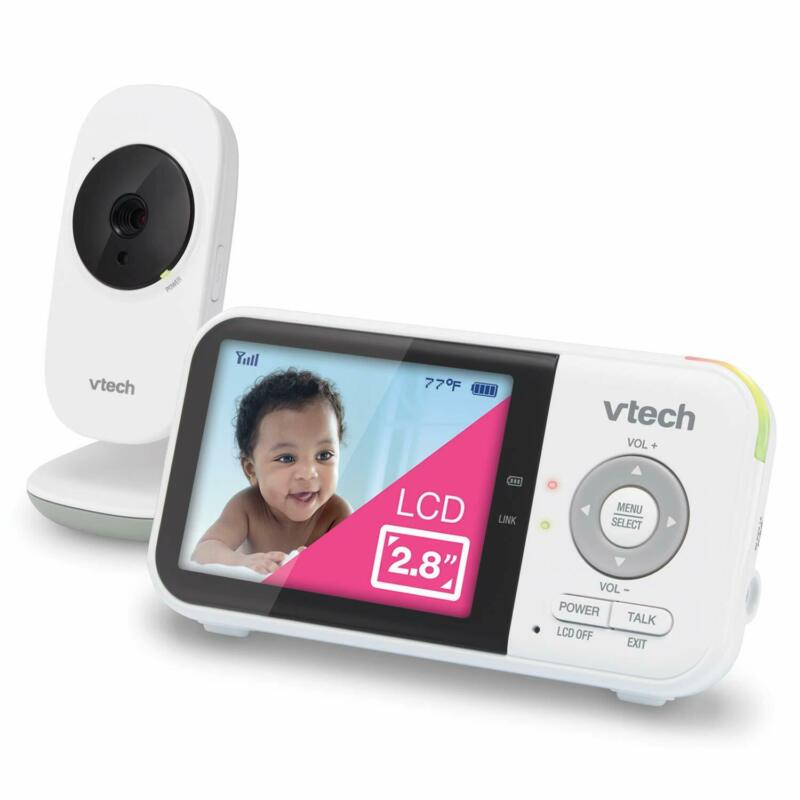
Vtech
VM819 Video Baby Monitor
Check in on your little one with a 2.8-inch LCD screen on the VTech VM819 Digital Video Baby Monitor. Soothe your baby using the lullabies and soft sounds that play right from the baby unit. Plus, you can make sure your infant is cozy by monitoring the nursery temperature that's displayed right on the LCD screen. Best of all, with the industry's best battery life, you can easily monitor your baby throughout the night with up to 19 hours of video streaming on one charge.
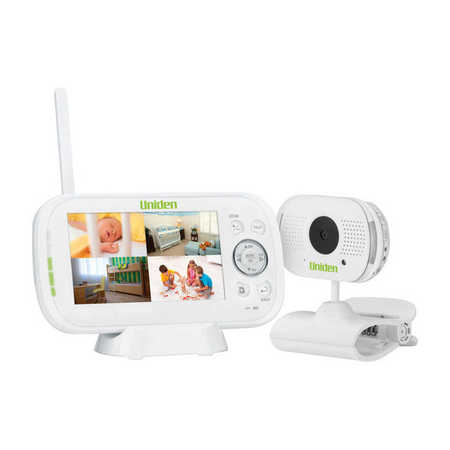
Uniden
BW3101 - 4.3” Digital Wireless Baby Video Monitor
From the range of award winning baby monitors, Uniden is pleased to introduce the latest in Wireless Video Monitoring Systems. This system has a large 4.3″ colour screen designed to monitor the safety of your sleeping baby or kids playing with an exceptionally user-friendly, high quality digital encrypted monitoring system. This Baby Watch even lets you view your child on a smart phone from anywhere in the world∧.
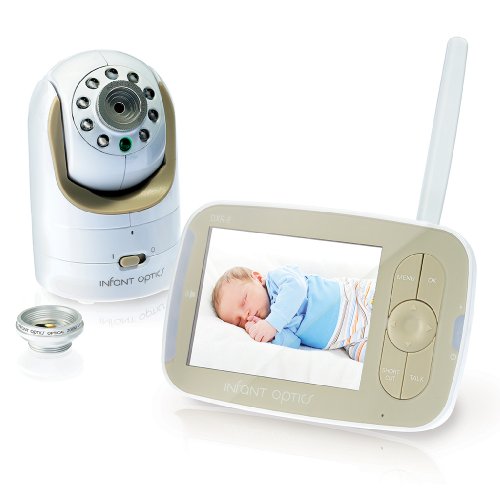
Infant Optics
Infant Optics DXR-8 Video Baby Monitor with Interchangeable Optical Lens
The Infant Optics DXR-8 Video Monitor is the first baby monitor with interchangeable lens technology. Three separate lens types normal, wide angle (sold separately) and zoom allow you to choose the most suitable focal length and viewing angle for the specific environment, just like a professional camera system.
What Is The Future Of Baby Monitors?
Baby monitors have changed greatly in appearance over the years, but their fundamental operation has remained largely unchanged. The devices are designed to pick up noises in the nursery and relay them to the parents. What, then, is in store for the development of baby monitor technology? The market for baby monitors is predicted to expand at a CAGR of 8.4% between 2018 and 2026, reflecting rising demand. The following considerations should lead to higher product demand:
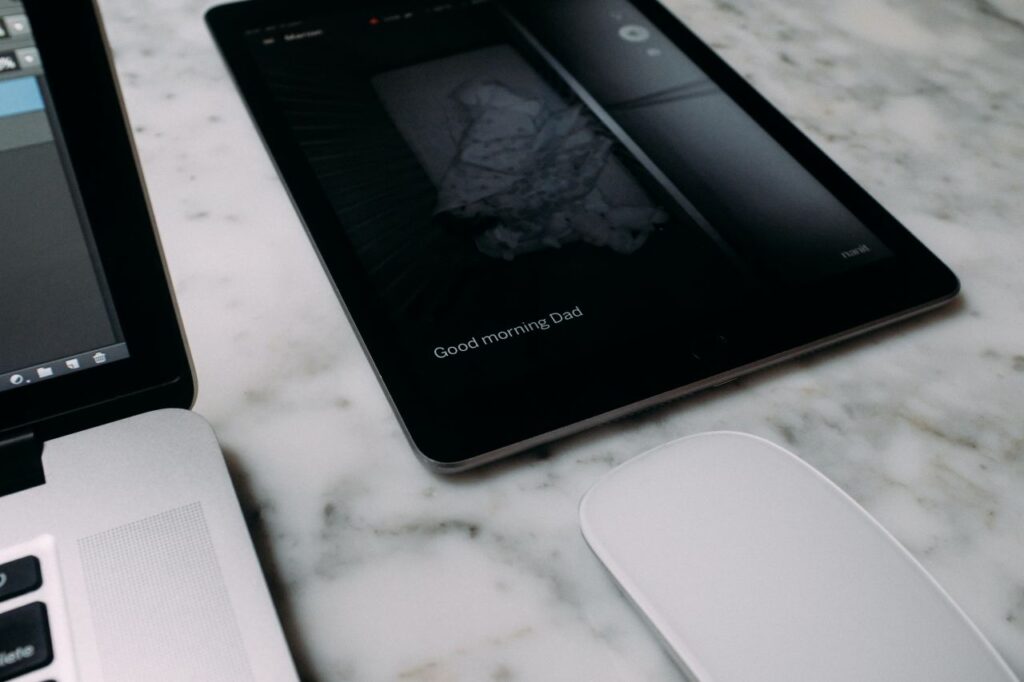
- There will be an estimated 64% of the population in its prime working years (between 25 and 54) by the year 2024. More working parents will require the gadget because this age range accounts for a disproportionate share of the reproductive population.
- There is a rising trend of parents making purchases online because of the convenience it provides in today's rapidly evolving digital environment. Companies are capitalising on this trend by ramping up baby monitor advertising in hopes of increasing sales.
- Parents will likely see the usefulness of the product as a result of rising online awareness of newborn safety.
Emerging Technology
Video Baby Monitor, Digital, MBP36 MBP36 Given the rapid development of technology, it is not unexpected that modern baby monitors include more sophisticated functions than ever before. Businesses constantly work to improve their products by thinking beyond the box. Accordingly, the market for interactive baby monitors has exploded. Moreover, today's baby monitors are equipped with technology that is meant to guarantee the transmission of a clean signal with low interference. Additional capabilities of contemporary models include:
- Vibration alerts: If your baby is crying, most modern baby monitors will give you a vibration signal. Consequently, baby monitors are now accessible to both hearing and non hearing parents.
- LED night lights: Some versions have LEDs that flash in response to your baby's cries.
- Alarms: Some baby monitors have an alarm that goes off whenever the baby starts to scream or get fussy.
- The ability to detect temperatures in a room:There are other baby monitors that include thermometers. Your infant's room should be kept at a comfortable temperature, and these devices can help you keep track of that.
- Playing lullabies: There are monitors available that can play lullabies or other soothing music to your child if you're too weary to do so yourself.
- Video functionality: However, the video capability is undeniably the most important component included in contemporary baby monitors. A live video feed of the infant can be viewed by the parents. Some devices even let you zoom in for a closer look at your little one.
Future Baby Monitors
Since technical progress by its very nature leads to improvement, baby monitor updates can only get better. Every new baby monitor should have the following functions:
- There are medical apps that can keep an eye on your child's ear temperature. As you may be aware, babies are prone to ear infections, particularly during their early years.
- The ability to keep track of your baby's feeding routine
- ECG tracking
- Oxygen level monitoring
You may start to feel like you need the latest and greatest in pregnancy, birthing, and childcare equipment once you've fallen down the rabbit hole of baby gear. It's not like that at all. A mother who occasionally addresses her growing belly is just as caring as one who invests in a baby belly sound system designed to "stimulate" the development of her unborn child.
It's true that mothers were able to hear their kids crying long before the invention of baby monitors, and that they survived quite well without most of the conveniences we take for granted today.
Baby monitor technology has come a long way since their inception. The importance of this unit in child rearing is becoming more widely recognised by parents. In addition to providing peace of mind to worried parents, monitoring gadgets are a boon to kids' safety. It's true that some parents worry about the effects of radiation from modern baby monitors on their children. Fortunately, though, more and more companies are developing baby monitors that are both safe for use and produce as little radiation as possible. In my opinion, we should welcome rather than fear technological advancements like baby monitors since they help us be more productive. Would We, then, advise a friend to get a baby monitor? Each and every parent may rest easy knowing that their child is safe in this unit.
Conclusion
Baby monitors didn't exist until 1937. The baby monitor's origins are unknown. A stolen baby in 1932 inspired the first baby monitor. Helped parents relax. Isamu Noguchi's 1937 baby monitor was the first.
The 1938 Zenith audio baby monitor. It shared a radio frequency with automobile stereos and garage door openers. The Zenith radio nurse cost $29.95, or $523 today. The Zenith Radio baby monitor used a circuit to send sound. Zenith discontinued the Radio Nurse in 1938. Hedy Lamarr and George Antheil invented HFS Spectrum in 1941. Infant Optics, Hellobaby, Babysense, and Eufy Spaceview utilise the FHSS. Most baby monitors started using wifi in the early 2000s. Baby monitor sales are predicted to rise 8.4% by 2026. Video baby monitors use the same 2.4 GHz frequency as wifi and have 30 patents.
Due to its convenience, more parents are buying for their families online. Companies are offering baby monitors to capitalise on the trend. Today's baby monitors use technology to minimise disturbance. This unit is becoming more valuable to parents. Monitoring devices protect children and reassure worried parents. Modern baby monitors don't release radiation, so parents shouldn't worry.
Content Summary
- Even fifty years ago, the idea of a baby monitor was unheard of.
- We can gain a sense of the evolution of the baby monitor by looking back at its brief history.
- You've found the ideal spot if you're curious about the fascinating development of baby monitors and their potential impact on the future of technology.
- There's little doubt about it: a century ago, there were no baby monitors.
- The origins of the baby monitor and its rationale for creation are a mystery.
- In 1937, the first baby monitors appeared on store shelves.
- Charles Lindbergh's kid was taken from their house and murdered on this sad Tuesday night when he was just 20 months old.
- Both the mother and the nanny were at home that day, so it's puzzling how this could have happened.
- A month later, Charles Jr.'s remains were discovered within a few kilometres from the Lindbergh home.
- While working for Zenith Radio Corporation in 1937, Isamu Noguchi created the first baby monitor.
- Details of the Zenith radio nurse's operation are provided below.
- The Zenith monitor has issues with distortion and speaker shaking at high volumes.
- The widespread anti-Japanese feeling that followed Japan's Pearl Harbor attack led to the destruction of numerous radio receivers, making them extremely hard to come across.
- If you are curious about the Zenith Radio Nurse and want additional information, the original Zenith Radio Manual is available for your perusal.
- Zenith Radio, the original baby monitor, used an electrical circuit to transmit analogue audio signals and had a one-way intercom.
- Due to the difficulties mentioned above, production of the Zenith Radio Nurse model ceased in 1938, and museums purchased the remaining handful for their "industrial design."
- Baby monitors using the now-expired Zenith patent and analogue signals to transmit audio were primarily produced and sold by a small number of companies between 1937 and the 1960s.
- One major drawback of the hand-held analogue radios used by soldiers during World War II was that only one conversation could go on at a time on each channel.
- The video below provides an overview of 49 MHz band analogue baby monitors.
- The Frequency Hopping Spread Spectrum's Invention (1941) Frequency Hopping Spread Spectrum, a safe form of communication that has played a significant role in the development of baby monitors, was developed in the 1990s (FHSS).
- Some of the greatest baby monitors, like Infant Optics, Hellobaby, Babysense video baby monitor, and Eufy Spaceview, now employ the FHSS because it ensures complete secrecy for all communications.
- You can find a list of the best FHSS-based baby monitors that are hack-proof in a different post on our site.
- Notably, whereas FHSS technology was discovered in the 1940s when the baby monitor industry was in its infancy, it was deployed in baby monitors in the 1990s.
- Several top-rated and best-selling baby monitors are still equipped with FHSS technology, which deserves recognition here.
- Certain baby monitors have achieved phenomenal success on the market.
- The market for baby monitors is predicted to expand at a CAGR of 8.4% between 2018 and 2026, reflecting rising demand.
- Video Baby Monitor, Digital, MBP36 MBP36 Given the rapid development of technology, it is not unexpected that modern baby monitors include more sophisticated functions than ever before.
- Accordingly, the market for interactive baby monitors has exploded.
- Moreover, today's baby monitors are equipped with technology that guarantees the transmission of a clean signal with low interference.
- Additional capabilities of contemporary models include Vibration alerts: If your baby is crying, most modern baby monitors will give you a vibration signal.
- Video functionality: However, video capability is undeniably the most important component of contemporary baby monitors.
- The parents can view a live video feed of the infant.
- Every new baby monitor should have the following functions: There are medical apps that can keep an eye on your child's ear temperature.
- The ability to keep track of your baby's feeding routine You may feel like you need the latest and greatest in pregnancy, birthing, and childcare equipment once you've fallen down the rabbit hole of baby gear.
- Baby monitor technology has come a long way since its inception.
- The importance of this unit in child rearing is becoming more widely recognised by parents.
- In addition to providing peace of mind to worried parents, monitoring gadgets are a boon to kids' safety.
- Some parents indeed worry about the effects of radiation from modern baby monitors on their children.
- Fortunately, though, more and more companies are developing baby monitors that are safe for use and produce as little radiation as possible.
FAQs About Baby Monitor
If you want to reduce your exposure to electromagnetic fields, keep at least this distance away from the source. For example, digital cordless baby monitors have been studied and shown to generate nearly the same amount of radiation as a mobile phone tower 500 feet (150 m) distant when putting less than 3.2 feet (1 m) from a baby's crib.
Even though there is no one set guideline, most experts recommend keeping a baby monitor on your child for at least the first year of their life.
On the other hand, some evidence suggests that earlier disabling of the monitor assists both the parent and the child in developing healthier sleep habits.
Most babies who are perfectly healthy do not need to have their vital signs monitored. Still, it would be best if you discussed the possibility of using a monitor with your primary care physician or a child and family health nurse.
Babies benefit from being in the same room as their parents for the first six months of their lives because the sound of breathing and movement can help them learn to breathe on their own and prevent them from falling into a deep sleep. Of course, the infant can't hear you over the monitor, but it's fantastic otherwise.
Between the ages of two and four
Experts do not recommend discontinuing a baby monitor at any certain age. Only a little study has been done on this, too. However, polls have shown that most parents quit using baby monitors when their kids are between the ages of two and four.
